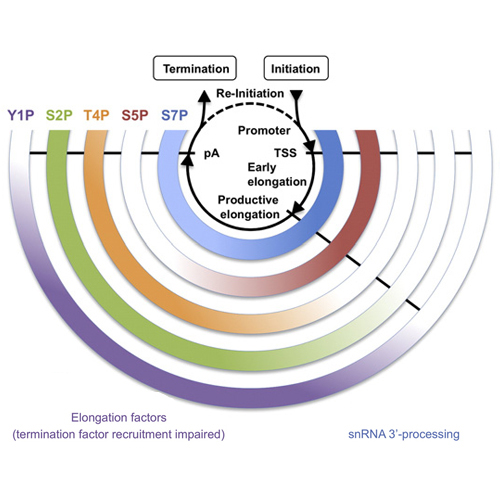Dynamic phosphorylation patterns of RNA polymerase II CTD during transcription
06-Sep-2012
Biochimica et Biophysica Acta, 2012, http://dx.doi.org/10.1016/j.bbagrm.2012.08.013, published on 06.09.2012
Biochimica et Biophysica Acta, online article
Biochimica et Biophysica Acta, online article
The eukaryotic RNA polymerase II (RNAPII) catalyzes the transcription of all protein encoding genes and is also responsible for the generation of small regulatory RNAs. RNAPII has evolved a unique domain composed of heptapeptide repeats with the consensus sequence Tyr1–Ser2–Pro3–Thr4–Ser5–Pro6–Ser7 at the C-terminus (CTD) of its largest subunit (Rpb1). Dynamic phosphorylation patterns of serine residues in CTD during gene transcription coordinate the recruitment of factors to the elongating RNAPII and to the nascent transcript. Recent studies identified threonine 4 and tyrosine 1 as new CTD modifications and thereby expanded the “CTD code”. In this review, we focus on CTD phosphorylation and its function in the RNAPII transcription cycle. We also discuss in detail the limitations of the phosphospecific CTD antibodies, which are used in all studies. This article is part of a Special Issue entitled: RNA Polymerase II Transcript Elongation.











